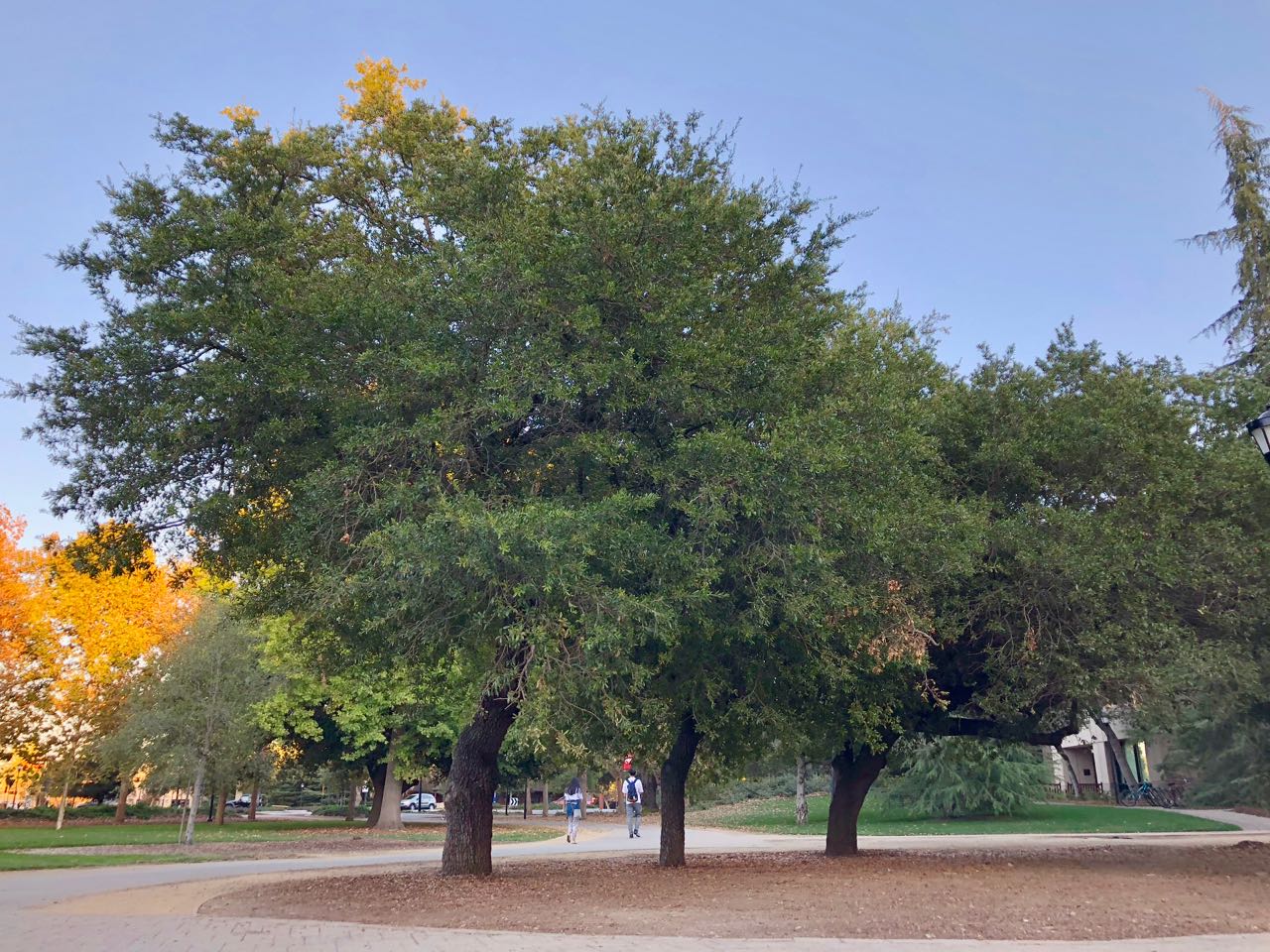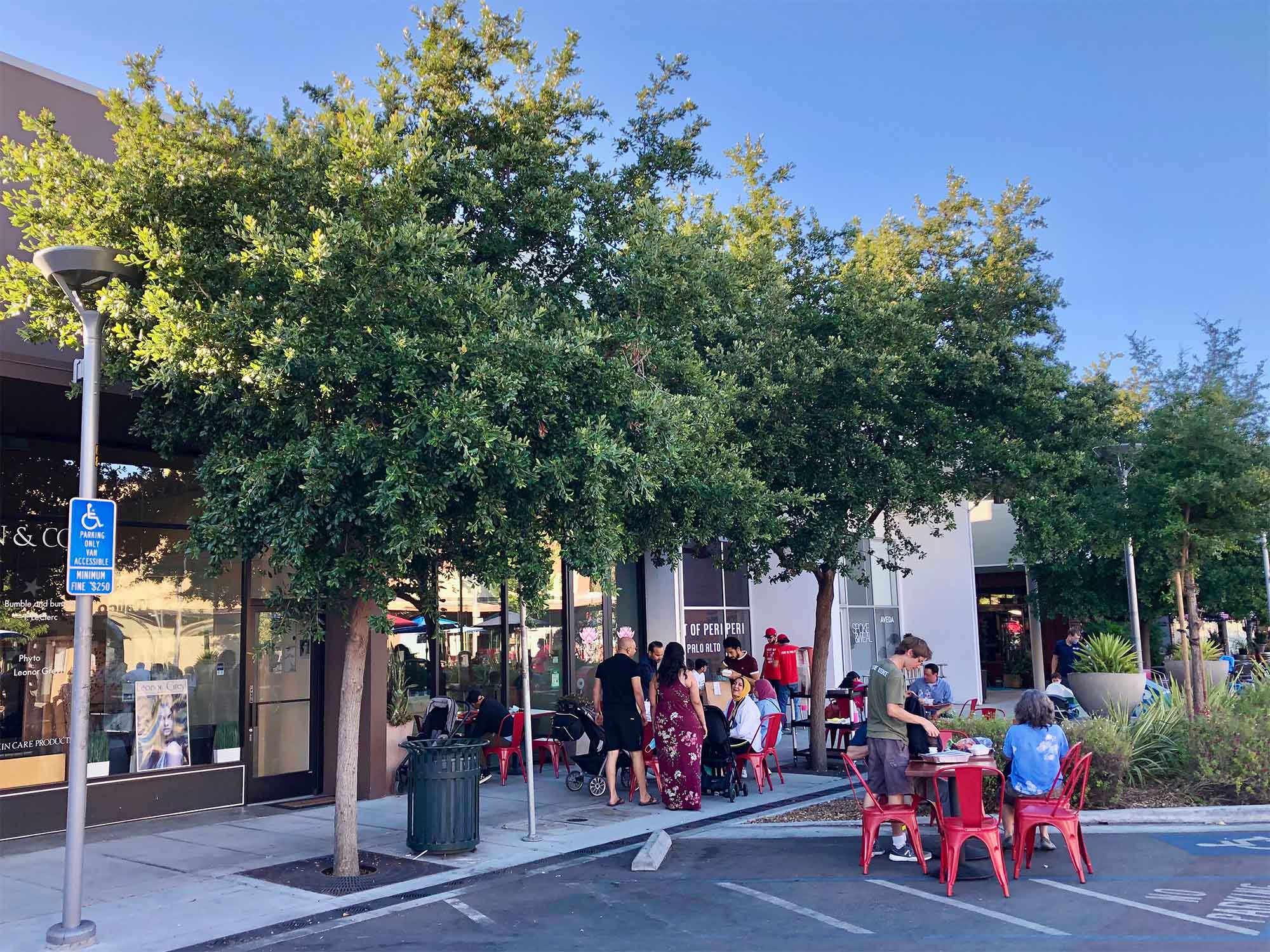Quercus virginiana
 southern live oak
southern live oak


For decades there were only three of these attractive trees on campus, though they are well known on the Atlantic and Gulf coasts where they are known simply as live oaks. The appearance of the acorns in the fall is truly quaint, by local standards, since they are relatively tiny and hang in pairs on stalks over an inch long. The leaves are unusual too, having no lobes or prickles, being slightly rolled under at the edges, glossy dark green on top and pale underneath, and as little as 2 inches long. The tips are rounded, though they may look pointed on casual examination.
The older trees are just east of Frost Amphitheater’s northeast entrance, not far from Arrillaga Alumni Center. Three lush specimens are in the lawn at Littlefield Center, and numerous more can be found north and south of the Cantor Center. One is in an island in Ford Plaza in front of Arrillaga Center for Sports and Recreation, and 8 stunted specimens line the sidewalk on Arguello Way nearby, east of Ford Center; these are what remain of a planting of 30 in that area.
A couple of dozen of the variety that goes by Cathedral Oak in the trade (Q. virginiana ‘SDLN’) were planted in Palo Alto’s California Avenue business district in 2009, for example at 240 and 330 California Ave. They have been performing well. Additional specimens were planted in the new curb extensions in 2015.
Name derivation: Quercus – Latin for oak; virginiana – of Virginia.
About this Entry: The main text of this entry is from the book Trees of Stanford and Environs, by Ronald Bracewell, published 2005. Cathedral Oak locations added (Cathedral Oak, not Cathedral, is the correct trade name); leaf notes enhanced (Oct 2018, SP). Minor revision, some details added; all locations now up to date (Nov 2022, SP).





